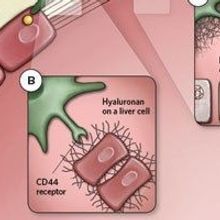Login
Subscribeliterature

Distantly Related Conifers Share a Surprising Number of Cold-Tolerance Genes
Ben Andrew Henry | Dec 1, 2016 | 2 min read
Spruce and pine and have relied on similar genetic toolkits for climate adaptation despite millions of years of evolution.

AI Lends Computing Power to Academic Search Engines
Bob Grant | Nov 14, 2016 | 2 min read
A tool that uses machine learning algorithms to comb and categorize the scientific literature is making waves in neuroscience.

Neuron Signaling Persists, Faintly, Even When Key Presynaptic Proteins Are Absent
Ben Andrew Henry | Nov 1, 2016 | 2 min read
Results from experiments in mice revise a long-held hypothesis that certain protein scaffolds are needed for synaptic activity.

Antarctic Bacteria Latch Onto Ice with Molecular Fishing Rod
Ben Andrew Henry | Nov 1, 2016 | 2 min read
Researchers describe the first known bacterial adhesion molecule that binds to frozen water.

Neural Network Found That Helps Control Breathing
Catherine Offord | Nov 1, 2016 | 2 min read
The results suggest that breathing is orchestrated by three—rather than two—excitatory circuits in the medulla.

Another Neural Circuit that Controls Breathing Found
Catherine Offord | Oct 31, 2016 | 1 min read
This third excitatory network helps to regulate postinspiration.

Protozoans Found With No Dedicated Stop Codons
Karen Zusi | Oct 1, 2016 | 3 min read
Some ciliates use the same trio of nucleotides to code for an amino acid and to stop translation.

Some Human Cancers Exhibit Low-grade Inflammation
Alison F. Takemura | Oct 1, 2016 | 2 min read
NSAIDs reduce this "parainflammation," hinting at how they help lower cancer risk.

Do Brighter Species’ Brains Emit Redder Light?
Alison F. Takemura | Oct 1, 2016 | 2 min read
Photon emissions in the brain are red-shifted in more-intelligent species, though scientists dispute what that means.

Ciliates Are Genetic-Code Deviants
Karen Zusi | Sep 30, 2016 | 1 min read
Traditional stop codons have a double meaning in the protozoans' mRNA, sometimes calling for an amino acid during translation.

Scientists Catch Translation in the Act
Ruth Williams | Sep 30, 2016 | 1 min read
Newly developed techniques from four different groups rely on the same basic steps to track translation in live cells.

Orchid Bees Use Simple Eyes to Detect Polarized Light
Catherine Offord | Sep 1, 2016 | 3 min read
The second visual field may aid in navigation.

pH Detectors in Lamprey Spinal Cords Control Cell and Locomotor Activity
Alison F. Takemura | Sep 1, 2016 | 2 min read
Neurons in the lamprey spinal cord can sense pH and counteract changes from the body’s optimal range.

Fruit Flies Feel Humidity with Dedicated Receptors
Alison F. Takemura | Sep 1, 2016 | 2 min read
Drosophila antennae let the insects seek out moisture levels they like best.

Macrophages Respond to Liver Injury
Ashley P. Taylor | Jul 31, 2016 | 1 min read
In mice, immune cells from the body cavity surrounding organs arrive at the site of damage to chew up the nuclei of dead cells.

Kissing Cousins
Catherine Offord | May 1, 2016 | 2 min read
Researchers discover a completely novel mechanism of cell signaling involving soluble chemokines and their transmembrane equivalents.

Aneuploid Responses
Catherine Offord | May 1, 2016 | 2 min read
A recent exchange of papers is divided over the evidence for compensatory gene expression among wild strains of aneuploid yeast.

Animal Magnetism
Catherine Offord | May 1, 2016 | 2 min read
A photosensitive protein behind the retinas of cockroaches plays a role in light-dependent, directional magnetosensitivity.

Instant Messaging
Catherine Offord | Apr 30, 2016 | 1 min read
An alternative route to sparking cell signals involves hook-ups between transmembrane and soluble ligands.

Tumor Traps
Kerry Grens | Apr 1, 2016 | 2 min read
After surgery to remove a tumor, neutrophils recruited to the site spit out sticky webs of DNA that aid cancer recurrence.